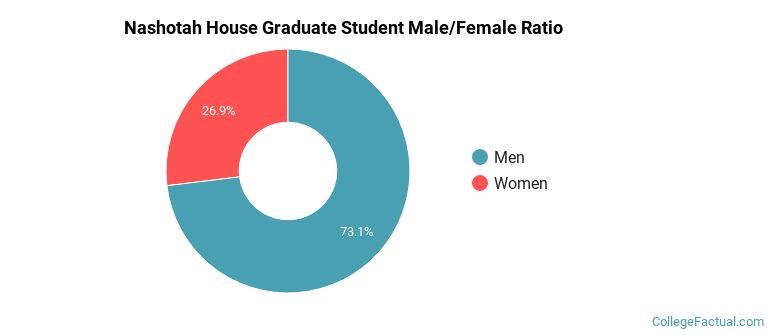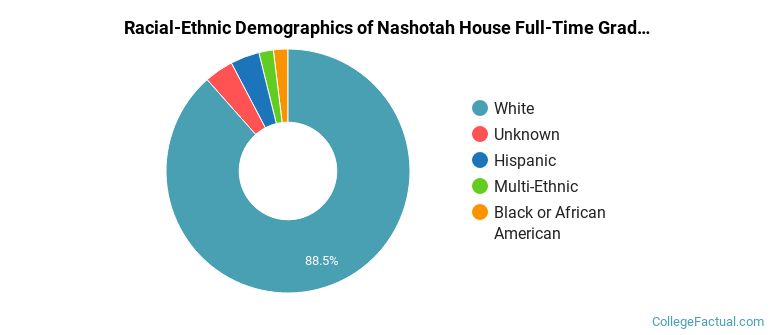 by our College Data Analytics Team
by our College Data Analytics TeamNashotah House total enrollment is approximately 106 students.
See racial/ethnic breakdown for all students.
Male/Female Breakdown of Graduate Students
About 17% of full-time grad students are women, and 83% men.

For the gender breakdown for all students, go here.
Nashotah House Racial-Ethnic Breakdown of Graduate Students

| Race/Ethnicity | Number |
|---|---|
| White | 58 |
| Unknown | 4 |
| Asian | 2 |
| Hispanic | 2 |
| Multi-Ethnic | 2 |
| Black or African American | 1 |
| Native Hawaiian or Pacific Islander | 0 |
| International | 0 |
See racial/ethnic breakdown for all students.

| Race/Ethnicity | Number |
|---|---|
| White | 85 |
| Unknown | 9 |
| Hispanic | 4 |
| Multi-Ethnic | 4 |
| Asian | 2 |
| Black or African American | 2 |
| Native Hawaiian or Pacific Islander | 0 |
| International | 0 |

There are approximately 19 female students and 87 male students at Nashotah House.

| Student Age Group | Amount |
|---|---|
| 35 and over | 42 |
| 30-34 | 14 |
| 25-29 | 7 |
| 22-24 | 5 |
| 18-19 | 0 |
| 20-21 | 0 |
| Under 18 | 0 |
Footnotes
*The racial-ethnic minorities count is calculated by taking the total number of students and subtracting white students, international students, and students whose race/ethnicity was unknown. This number is then divided by the total number of students at the school to obtain the racial-ethnic minorities percentage.
References
Department of Homeland Security Citizenship and Immigration Services
Read College Factual's Diversity Ranking Methodology.